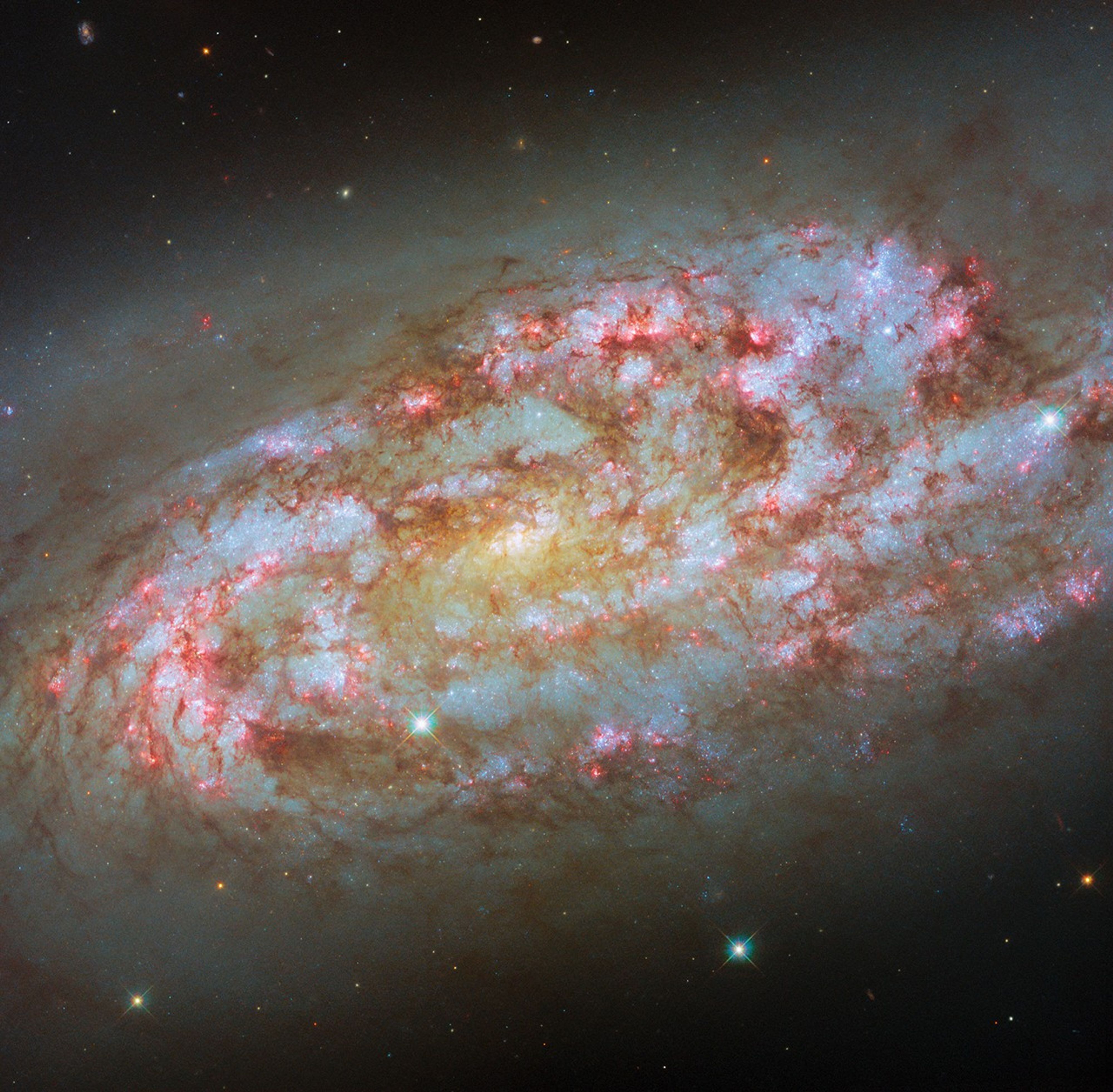This is an image of gravitational lens system SDSSJ0946+1006 as photographed by Hubble Space Telescope's Advanced Camera for Surveys. The gravitational field of an elliptical galaxy warps the light of two galaxies exactly behind it.
Credit: NASA, ESA, and R. Gavazzi and T. Treu (University of California, Santa Barbara, Calif.)
The Hubble Space Telescope has revealed a never-before-seen optical alignment in space: a pair of glowing rings, one nestled inside the other like a bull’s-eye pattern. The double-ring pattern is caused by the complex bending of light from two distant galaxies strung directly behind a foreground massive galaxy, like three beads on a string. This very rare phenomenon can offer insight into dark matter, dark energy, the nature of distant galaxies, and even the curvature of the universe.
The phenomenon, called gravitational lensing, occurs when a massive galaxy in the foreground bends the light rays from a distant galaxy behind it, in much the same way as a magnifying glass would. When both galaxies are exactly lined up, the light forms a circle, called an “Einstein ring,” around the foreground galaxy. If another background galaxy lies precisely on the same sightline, a second, larger ring will appear. The massive foreground galaxy is almost perfectly aligned in the sky with two background galaxies at different distances. The foreground galaxy is 3 billion light-years away. The inner ring and outer ring are comprised of multiple images of two galaxies at a distance of 6 billion and approximately 11 billion light-years. The odds of seeing such a special alignment are estimated to be 1 in 10,000.


































